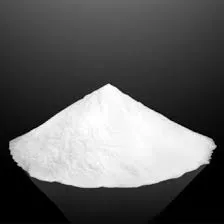
Nov . 27, 2024 01:20 Back to list
Exploring the Applications and Benefits of Methyl Hydroxyethyl Cellulose in Various Industries
The Uses and Benefits of Methyl Hydroxyethyl Cellulose (MHEC)
In recent years, there has been a growing interest in the applications of various cellulose derivatives in both industrial and consumer products. Among these derivatives, Methyl Hydroxyethyl Cellulose (MHEC) stands out due to its unique properties and versatility. MHEC is a non-ionic cellulose ether that is synthesized by the methylation and hydroxyethylation of cellulose. It is widely used in fields such as construction, pharmaceuticals, food processing, and personal care products. This article discusses the uses and benefits of MHEC in various industries.
Composition and Properties
MHEC is derived from natural cellulose, which is abundantly available from plant sources. The modification of cellulose to form MHEC enhances its solubility in water and provides it with unique properties. MHEC is known for its thickening, binding, film-forming, and stabilizing capabilities, making it an ideal additive in many formulations. The physical and chemical characteristics of MHEC can be adjusted by varying the degree of substitution, molecular weight, and the ratio of methyl to hydroxyethyl groups.
Applications in Construction
One of the significant uses of MHEC is in the construction industry, particularly in cement-based products such as tiles, plasters, and joint compounds. MHEC acts as a thickening agent, which improves the workability of these materials. It enhances water retention, which is crucial for achieving proper curing and hydration of cement. Additionally, MHEC contributes to increased adhesion and reduces the likelihood of cracking, thereby extending the longevity of construction materials.
Role in Pharmaceuticals
In the pharmaceutical industry, MHEC is utilized as a binder and a thickening agent in various formulations, including tablets and suspensions. It helps improve the stability of these formulations and ensures a uniform distribution of ingredients. MHEC's non-ionic nature minimizes interactions with active pharmaceutical ingredients, making it an ideal excipient in drug formulations. Moreover, its film-forming properties can be used to create sustained-release formulations, which enhance the therapeutic efficacy of medications.
methyl hydroxyethyl cellulose mhec

Food Industry Applications
MHEC finds extensive use in the food industry as well, where it serves as a thickener, stabilizer, and emulsifier. It is commonly found in dressings, sauces, and dairy products, where it helps maintain texture and consistency. MHEC is approved for use in food applications by various health authorities, making it a safe choice for enhancing the quality of food products. Its ability to improve mouthfeel and prevent separation in emulsified systems contributes to a better consumer experience.
Personal Care Products
The cosmetic and personal care industry is another significant area where MHEC is utilized. It is commonly found in moisturizing creams, lotions, and gels, where it functions as a thickening agent. Its ability to form a film on the skin surface enhances the sensory experience of the products, imparting a smooth and silky texture. Additionally, MHEC is often used in hair care products, where it helps in managing the viscosity and stability of the formulations.
Environmental Considerations
In today's eco-conscious world, the sustainability of raw materials is a crucial consideration in any industry. MHEC is derived from renewable sources and is biodegradable, making it an environmentally friendly choice compared to synthetic alternatives. The use of MHEC can contribute to the overall sustainability of products in which it is included, aligning with the growing demand for green technologies and sustainable practices.
Conclusion
Methyl Hydroxyethyl Cellulose (MHEC) is a versatile and effective cellulose derivative that serves a multitude of applications across various industries. Its unique properties, including thickening, binding, and film-forming capabilities, make it indispensable in construction, pharmaceuticals, food processing, and personal care products. As industries continue to seek sustainable and effective solutions, the demand for MHEC is expected to grow, owing to its environmentally friendly profile and multifunctional uses. This growing acceptance and utilization of MHEC reflect a broader trend toward integrating natural and sustainable materials into modern products.
-
HPMC for Tile Adhesive: Superior Bonding & Workability
NewsAug.30,2025
-
Premium Cellulose Ether: Effective Liquid Thickener Solutions
NewsAug.29,2025
-
HPMC for Tile Adhesive: Enhanced Bonding & Workability
NewsAug.28,2025
-
tile-bonding-additives-for-stronger-bonds
NewsAug.22,2025
-
construction-grade-rdp-for-wholesale-needs
NewsAug.22,2025
-
trusted-hec-supplier
NewsAug.22,2025







